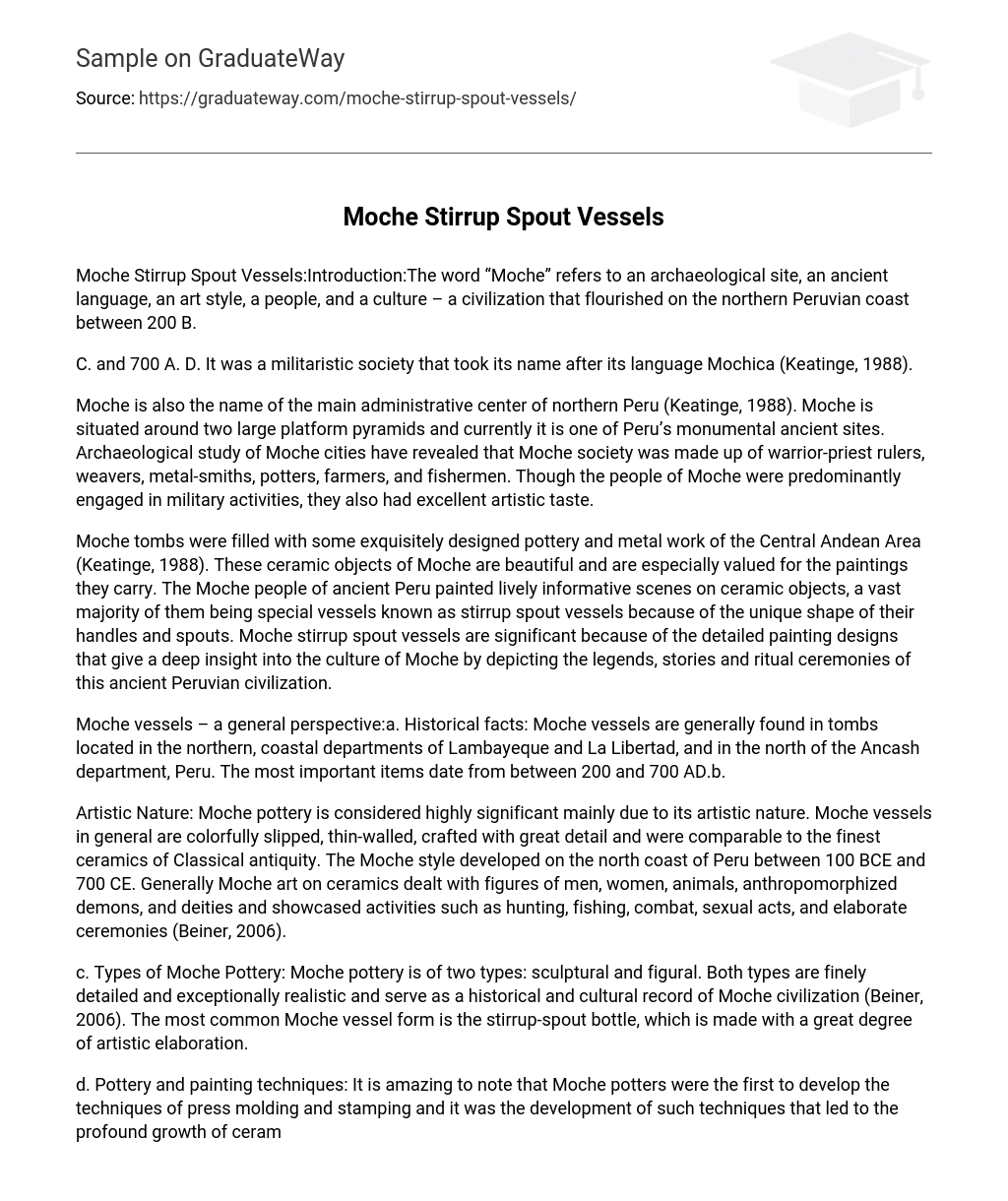The word “Moche” refers to an archaeological site, an ancient language, an art style, a people, and a culture – a civilization that flourished on the northern Peruvian coast between 200 B. C. and 700 A. D. It was a militaristic society that took its name after its language Mochica (Keatinge, 1988).
Moche is also the name of the main administrative center of northern Peru (Keatinge, 1988). Moche is situated around two large platform pyramids and currently it is one of Peru’s monumental ancient sites. Archaeological study of Moche cities have revealed that Moche society was made up of warrior-priest rulers, weavers, metal-smiths, potters, farmers, and fishermen. Though the people of Moche were predominantly engaged in military activities, they also had excellent artistic taste.
Moche tombs were filled with some exquisitely designed pottery and metal work of the Central Andean Area (Keatinge, 1988). These ceramic objects of Moche are beautiful and are especially valued for the paintings they carry. The Moche people of ancient Peru painted lively informative scenes on ceramic objects, a vast majority of them being special vessels known as stirrup spout vessels because of the unique shape of their handles and spouts. Moche stirrup spout vessels are significant because of the detailed painting designs that give a deep insight into the culture of Moche by depicting the legends, stories and ritual ceremonies of this ancient Peruvian civilization.
Lost civilizations are best studied using the art forms of the period obtained through excavation. As such, Moche Stirrup Spout vessels are available to mankind for study and appreciation. But due to the fact that there are no written records of the Moche civilization, it has proven difficult to analyze and decipher the paintings on these artistic vessels. However, one can get a glimpse of the fascinating and historically significant Moche through the gods, warriors, and stories depicted in the remarkable sculptures and paintings of these Moche Stirrup Spout vessels.





